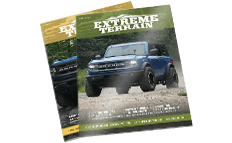2019 Toyota Tundra
Toyota's minor updates to the 2019 Tundra come in the form of color palette changes, a new SX package and the reintroduction of the TRD Pro model back into the lineup. The SX package, available for SR5 double-cab trucks only, is mainly an appearance package, adding monochromatic trim, blacked out wheels and front bucket seats. The TRD Pro off-road package returns for 4x4 equipped Tundras, featuring Fox internal-bypass units, 18" A/T tires, TRD Pro exhaust system, underbody skid plate and LED fog and headlights. Engine wise, the two V8 options remain unchanged. The 4.6L V8 continues its duty as the standard engine, producing 310 horsepower and 327 lb-ft of torque. Most buyers opt for the larger and more powerful 5.7L V8, which ups the horsepower and torque by 71 horsepower and 74 lb-ft of torque, respectively. A 6-speed automatic is the only transmission offered, regardless of engine, cab or driveline configuration.
Lower Stopping Distance
For a truck that has a max tow capacity of 10,200 lbs, the 2019 Tundra's measured stop distance (unloaded) from 70 miles an hour comes in at 190 feet. New brake pads and rotors can reduce this distance and keep the brakes cooler overall, lowering the chance of brake fade on subsequent stops. Out of the pads and the rotor, it is the former that will make the more dramatic difference in stopping performance. Switching out the factory pads with a more aggressive biting carbon-ceramic blend will create more friction on the rotor, thereby decelerating it at a faster rate. However, friction creates heat, and excessive heat is detrimental to a braking system. This is where the design of the brake rotor comes into play. Aftermarket discs feature milled slots on the rotor face and cross-drilled holes. The role of the slots is to provide a channel for the gases created during braking to easily escape, and the cross-drilled holes are present to reduce the rotating mass and therefore make it easier for the rotor to dissipate heat. If the rotor and pads get too hot, drivers will experience brake fade, where the braking ability of the pad and rotor is severely deteriorated due to heat. Thereby, the pad and the rotor actually work in tandem. The pads provide the bite, but the rotors are responsible for adequate cooling in order for the pads to keep grabbing.
Front End Changeup
A popular rugged look involves upgrading the front grille of a Tundra to an aftermarket version. Aftermarket grilles focus mainly on metal replacements, with mesh or slat covers. Mesh wire grills are very popular among the off-road crowd and often feature integrated LED light bars, making them well suited for trail use. The slat style metal grills are aimed towards those that appreciate a more polished and upscale look. In terms of construction, aftermarket grilles are generally made of aluminum or mild steel. Both offer excellent strength, with the only real difference being weight. It is more common to find grilles with integrated lighting to be made of aluminum in order to keep the overall weight of the unit in check. Alongside being lighter, aluminum is also naturally rust-proof and resistant to corrosion. Steel grilles, unless using stainless steel, will all require a protective coating (usually in the form of black epoxy or powdercoat) in order to endure the elements.
















